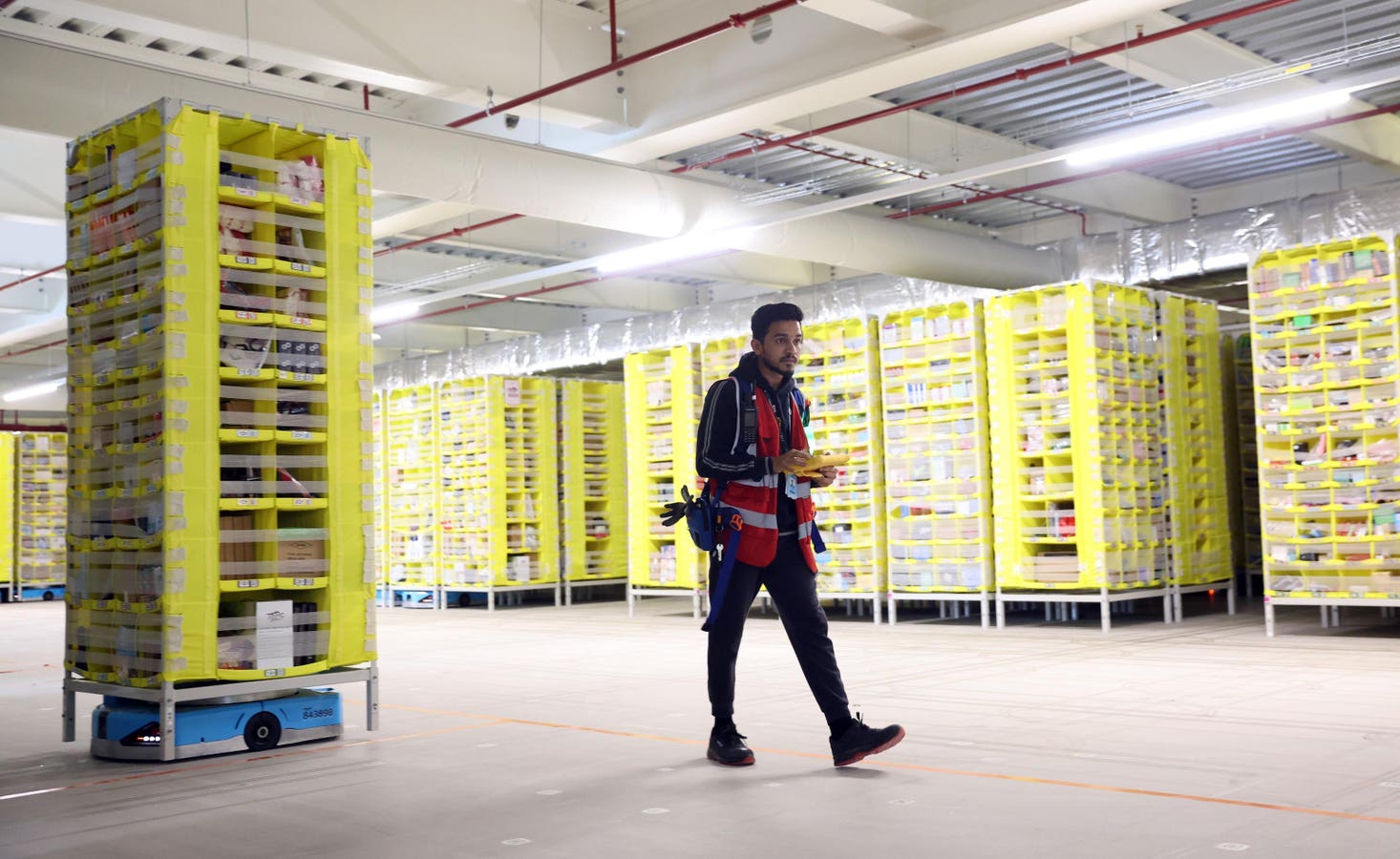An Amazon employee checks the robotic warehouse at Amazon’s Robotic Fulfillment Centre in Sutton … More
Amazon Robotics announced last week that it just hit a major milestone with over one million warehouse robots deployed. In addition to the announcement, the company unveiled DeepFleet, a new AI foundation model that acts like a traffic controller for its machines, helping them move more efficiently avoid bottlenecks.
Amazon CEO Andy Jassy recently tweeted a simple question: “How can we help operations employees access inventory more efficiently?” The company says that’s the north star for its robotics strategy. These machines aren’t about replacing people, they’re about speeding things up.
From a Handful to a Million Robots
Amazon started testing shelf-moving robots back in 2012. Since then, the use of warehouse-floor robots has become central to how Amazon fills orders, with over a million robots now operating across more than 300 warehouses. These robots are now the workhorses of Amazon’s fulfillment centers. The millionth unit came off the production line in Japan, marking the shift from simple conveyors to fully automated helpers.
These bots aren’t just flashy, but they do heavy lifting, literally. The robots are squat robotic carts the size of a footstool. They slide under a shelving tower, lift the whole rack, and bring it to a worker who plucks the ordered item. When the shelf is empty, the robot puts it back and hunts for the next pick.
Every trip it makes shaves a little walking time from a human packer’s shift and pushes an order closer to getting out the door. It’s all about cutting down the time it takes to get an order from shelf to shipping box.
DeepFleet: Real-Time Routing for Robots
The newly announced DeepFleet system is built on Amazon’s AWS infrastructure and uses live warehouse data to reroute robots on the fly. It looks for jams or bottlenecks and finds better paths, helping robots avoid wasting time in the warehouse equivalent of a traffic jam.
“Think of DeepFleet as an intelligent traffic management system for a city filled with cars moving through congested streets,” says Scott Dresser, VP of Amazon Robotics. “DeepFleet coordinates our robots’ movements to optimize how they navigate our fulfillment centers. This means less congestion, more efficient paths, and faster processing of customer orders.”
The new AI model learns on the fly to steer bots around slow spots, cutting their travel time by about 10 percent and speeding up customer orders. That smarter routing means fewer delays and more predictable delivery times for customers.
According to Amazon: More Tech Jobs, Not Fewer
In Shreveport, Louisiana, Amazon opened a new fulfillment center last year with its latest generation of robots. According to the company, those robots didn’t replace jobs, they created new ones.
“Advanced robotics require 30% more employees in reliability, maintenance, and engineering roles,” Dresser said.
New roles range from motor repair techs to data analysts. Repair techs keep the bots rolling, and the analysts use data insights to track robot movement patterns to spot delays. It’s not just about operating machines for these new roles, it’s about maintaining and improving them.
Since 2019, more than 700,000 Amazon workers have joined programs to build up their tech skills. Whether those workers stay at Amazon or move on, the company says the experience prepares them for jobs in an increasingly automated economy.
The Bigger Automation Picture
Amazon’s not alone in using bots to automate the warehouse. U.K.-based Ocado uses thousands of compact bots in its grocery warehouses. The bots zip across grid-like platforms, picking items with near-perfect accuracy. The system can pack a customer’s order in seconds.
Walmart is working with Symbotic to bring robot-powered sorting to 42 of its distribution centers by 2030. Their CasePick robots can sort cases in under a minute, helping speed up restocking in stores.
The trend is clear: companies are investing in automation not just to move faster, but to rethink how and where human workers fit into the process.
What’s Next for Amazon Robotics
Amazon plans to use data from DeepFleet to cut down energy use inside its warehouses. The company is also experimenting with smaller, more nimble “micro-fulfillment” centers closer to big cities. That could mean faster delivery and a smaller carbon footprint.
Eventually, Amazon says AI won’t just direct traffic. It’ll help decide what products to stock and when, turning warehouses into systems that adjust themselves in real time.
“This is just the beginning. As DeepFleet learns from more data, it will continue to get smarter, driving deeper efficiencies, unlocking more selection closer to customers, and reimagining what’s possible in robotic logistics,” Dresser says.
The big unknown? How people will fit into a world where machines not only move the shelves but make the decisions too.









